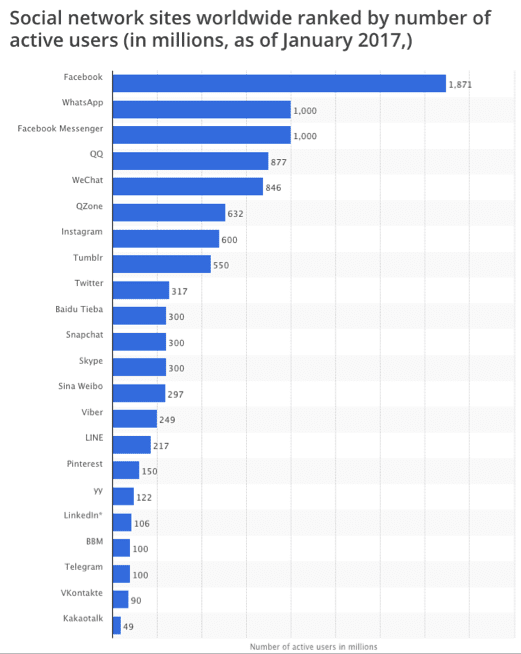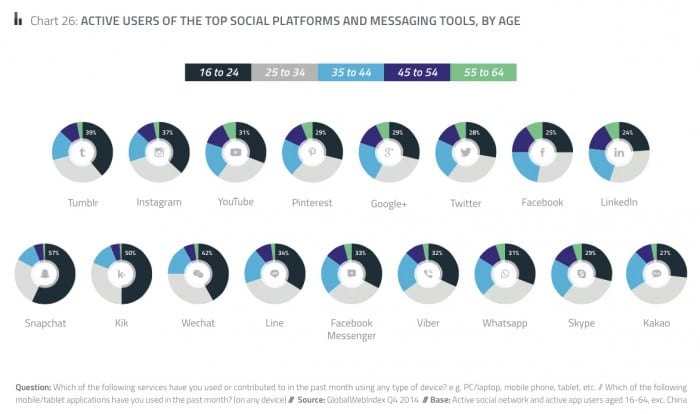Chan Nga Yan, 1155081733
After
cloning the Snapchat's popular story function on its most youth-liked app - Instagram, Facebook announced that Whatsapp would also launch a similar function to replace users' text statuses in Feb. The new version allowed users to update photos, GIFs or videos overlaid with drawings, emojis
or caption on their status which will be only visible to their selected friends for 24 hours before
vanishing. However, after receiving a series of negative responses, WhatsApp has decided to take the new function off the table, and now it will only be available alongside the original text statuses.
Source: https://yourstory.com/
The major reason
that Facebook is try so hard to cover Snapchat’s most successful feature in all
its family apps is probably it sees Snapchat will become its biggest threat in
the near future. According the statistic as of January 2017, Facebook is
ranking number 1 as the most popular social network site worldwide with 1.87
billion monthly active users, followed by WhatsApp, Facebook Messenger on
second and third, Instagram on sixed. Snapchat is ranking on the eleventh place
with 300 million active users. (statista, 2017) It seems there is still a big
difference between the size of Facebook and Snapchat’s user base.
Source: http://www.smartinsights.com
However, if we take
a look into the demographic of the active users of these top social platforms,
we can see where Facebook’s worries came from. Only 25% of Facebook users are
between 16 and 24 years old, while 37% for Instagram and 57% for Snapchat. Facebook’s
aging problem could lead to fade out in the future. Therefore, it needs to take
back the youth market by modifying its features.
Source: http://www.smartinsights.com
Few days ago, Facebook has announced that the story function will also be added in
the Facebook app which will consist more AR facemask filters,
stickers, emoji and drawing functions, in order to encourage users to share more regularly with more instant content.
Facebook
is phrase-by-phrase examining the possibility of adapting the story function in all its family apps,
with the ultimate goal of eliminating SnapChat from the social media market. It
first started from Instagram which targets at similar young user group as
snapchat, then to the more general-used Whatsapp and Facebook Messenger, and
finally to the main revenue generator – Facebook. Every phrase was harder than
the previous one, as the average age of the users is higher and it would be
harder to persuade them to accept new functions. What's next, we need to wait and see if Facebook is able to change its existing users' behaviors or
vice versa.
Reference:
Most famous
social network sites worldwide as of January 2017, ranked by number of active
users (in millions). (2017). Retrieved from https://www.statista.com/statistics/272014/global-social-networks-ranked-by-number-of-users



Hi Hazel,
ReplyDeleteThank you for your article :)
I agree that the main reason that Facebook has adopted the story function in their family apps is due to the threats of Snapchat. It is no doubt that the story function has made a success when it first adapted on Instagram, in which the number of users who used this function has already hit to 150M nowadays. However, the story function has received several negative responses when Facebook rolled out this function in their family app, WhatsApp. In my opinion, I think the main reason that it has off the table in WhatsApp is because the story is mainly an image or video based function to record users instant moment in the social media platforms, whereas WhatsApp is mainly a messaging platform, which does not suitable to apply the story feature in its app. Hence, users tend to prefer to use back the text status instead of instant story.
Facebook has also adopted this function in its own application, and I think they should add more different elements such as variety of stickers, or even GIF emojis to advance its function in order to encourage more user to share their instant moment via this new feature.
Thank you for your sharing.